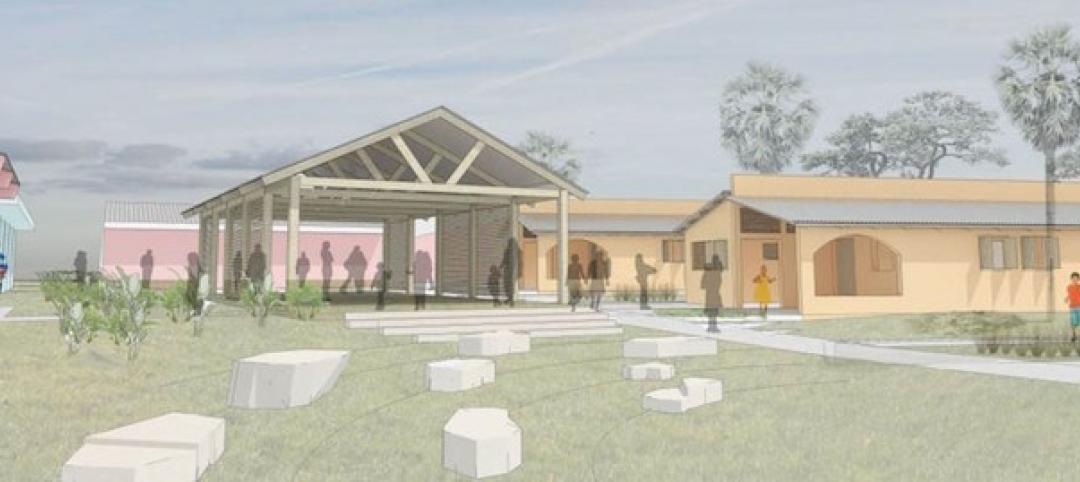Two prominent Atlanta-based design firms whose specialties include the hospitality sector are joining forces.
On Jan. 1, The Johnson Studio, which has been in business for more than 25 years and currently has 22 employees, will blend its operations into the Atlanta offices of Cooper Carry, a full-service architectural design firm founded in 1960, with offices in New York and Alexandria, Va., and an international portfolio.
Kevin Cantley, AIA, Carry Cooper’s CEO, says that his firm is one of the top three hotel designers in the country. As such, it has worked with myriad restaurant design firms, including The Johnson Group. “We are delighted to have them work alongside our talented hotel and retail team every day,” Cantley said about the merger.
Bill Johnson, AIA, Senior Principal and Founder of The Johnson Studio—whose first big restaurant design project was a Cheesecake Factory in Atlanta’s Buckhead neighborhood in the early 1990s—is staying on to lead the new business’s restaurant design practice. He will work with Cooper Carry’s seven Hospitality Studio principals.
The Johnson Studio will maintain its own brand. “This collaboration provides a platform for future services that we feel will be unparalleled,” said Johnson in a prepared statement.
According to its website, Cooper Carry has 11 specialty practices. Its services include architecture, interior design, landscape architecture, planning, sustainability consulting, and environmental graphics and wayfinding. The company emphasizes “environmentally responsible design,” as well as “connective architecture” that brings people and buildings within neighborhoods together.
Among its recent hotel design projects are the 1.1 million-sf Marriott Marquis Hotel in Washington, D.C., the 37,916-sf Sea Pines Plantation Golf Clubhouse in Hilton Head, S.C., and the 613,942-sf Hilton Cleveland Downtown.
Related Stories
Architects | Jan 8, 2018
Catherine Selby joins Dattner Architects’ partners group
Selby joins Principals Paul Bauer AIA; Richard Dattner FAIA; Jeff Dugan AIA; Beth Greenberg AIA; Daniel Heuberger AIA, LEED AP; Kirsten Sibilia Assoc. AIA; William Stein FAIA; and John Woelfling AIA, LEED AP in leading the 115-person firm.
Big Data | Jan 5, 2018
In the age of data-driven design, has POE’s time finally come?
At a time when research- and data-based methods are playing a larger role in architecture, there remains a surprisingly scant amount of post-occupancy research. But that’s starting to change.
Multifamily Housing | Jan 4, 2018
Shigeru Ban’s mass timber tower in Vancouver gets city approval
The 232-foot-tall Terrace House luxury condo development will be the tallest hybrid wood structure in North America.
Architects | Jan 4, 2018
Integrated design for children and housing
Homelessness is an issue affecting millions around the globe.
Sponsored | | Jan 3, 2018
4 networking strategies to grow your business
Follow these networking strategies to grow your architectural business with the work that you want.
BD+C University Course | Jan 2, 2018
The art and science of rendering: Visualization that sells architecture [AIA course]
3D artist Ramy Hanna offers guidelines and tricks-of-the-trade to ensure that project artwork is a stunning depiction of the unbuilt space.
Green | Dec 22, 2017
Green builders can use ‘big data’ to make design decisions
More and more, green project teams are relying on publicly available “external datasets” to prioritize sustainable design decisions, says sustainability consultant Adele Houghton.
Reconstruction & Renovation | Dec 21, 2017
Interactive map includes detailed information on historic New York City buildings
The New York City Landmarks Preservation Commission launched a new, enhanced version of its interactive map, Discover NYC Landmarks.
High-rise Construction | Dec 20, 2017
Another record year for high-rise construction
More than 140 skyscrapers were completed across the globe this year, including 15 supertall towers.
Game Changers | Dec 20, 2017
Urban farms can help plant seeds for cities’ growth around them
Urban farms have been impacting cities’ agribusiness—and, on some cases, their redevelopment—for decades.

















